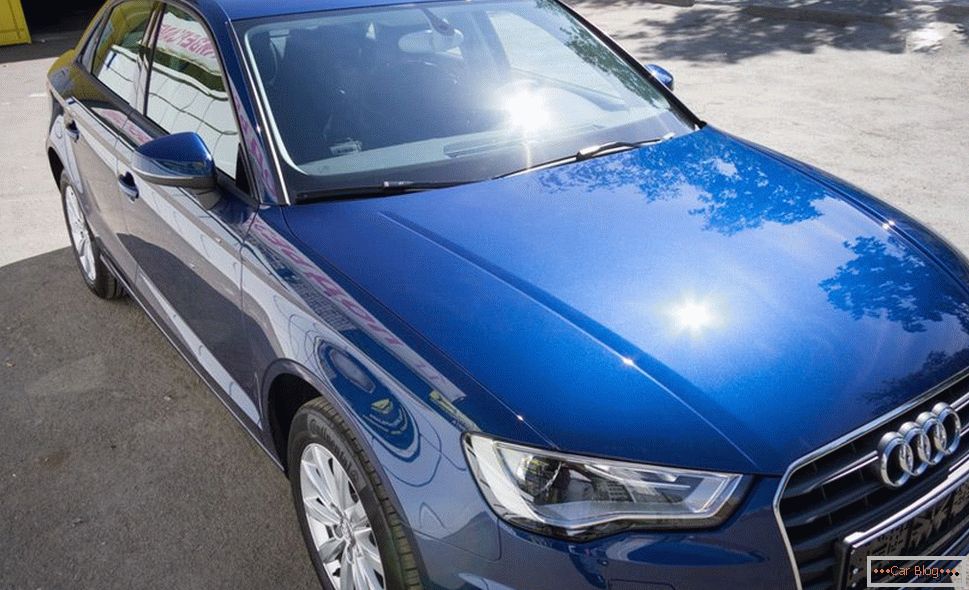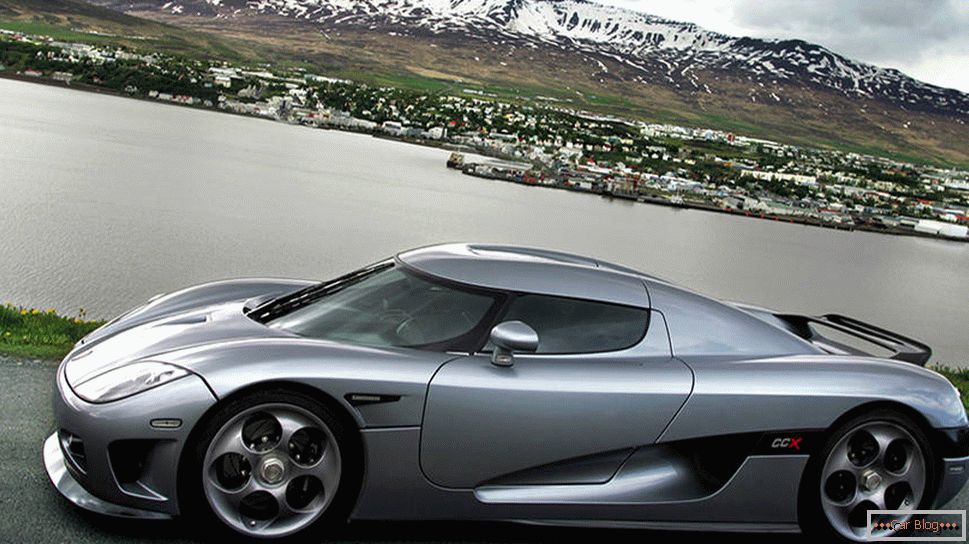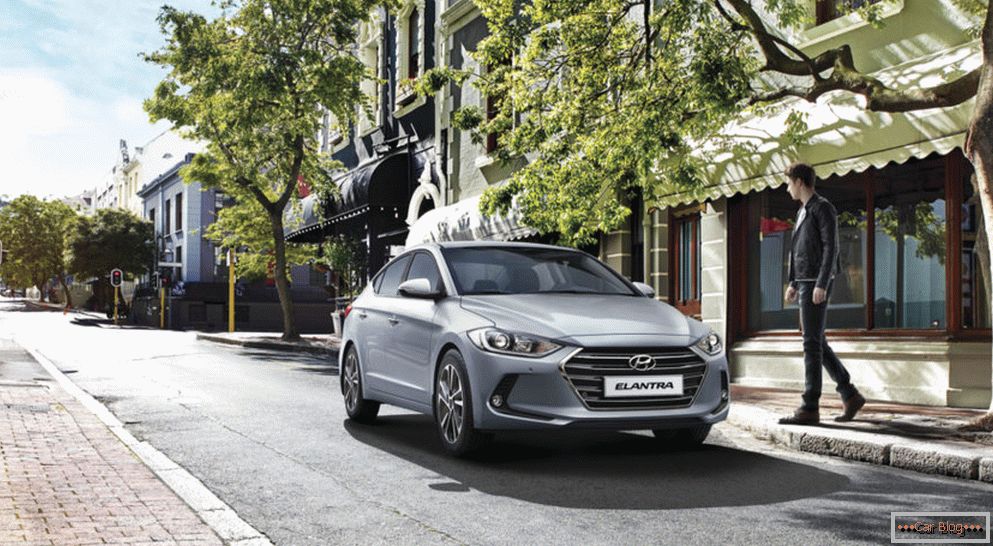Mercedes E-class are available for a very long time, but all these cars of different generations combine some features, they are about the same sway when driving on a flat road, with about the same amplitude. On the waves the car is assembled, there is a low roll angle.

Evolution Mercedes E-Class
The history of the Mercedes E-class began from far 1937, when cars on the roads were a rarity.
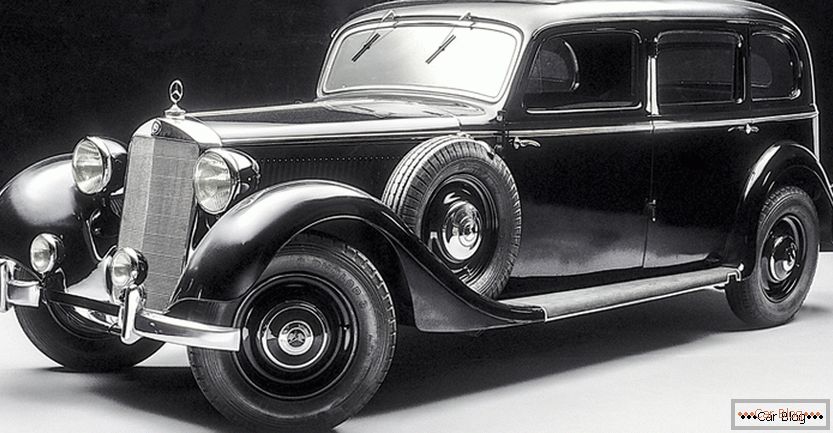
E-Class cars begin their history with the pre-war 170V, but since the E-Class is a medium-sized Mercedes, it’s better to consider the Mercedes 230 W143 as its predecessor, which ranged from 4,400 to 4,790 mm. Between 1937 and 1941, 20,000 such cars were produced, which were completed with a 2.2-liter inline six-cylinder engine with a capacity of 55 liters. with., independent suspension and 4-speed gearbox. It was also built about 2000 diesel versions 260D, which are known as the W138 with a 2.5 liter 45-horsepower engine.

The next real ancestor of the E-class is the model W120, released in 1953, popularly called Ponton. This is the first Mercedes, which has a 3-volume bearing body, here is the engine, parts of the front suspension and steering mounted on the subframe. There were a complete set of 180 and 180D - gasoline 1.8 with a capacity of 52 liters. with. and diesel 1.8 with a capacity of 40 liters. with. After 4 years, more powerful modifications of the W121A appeared - 190 and 190D, a gasoline and diesel engine with a volume of 1.9 liters, a gasoline engine developed a power of l. with., and diesel - 50 l. with. Until 1962, about 443,000 units of such cars were produced.
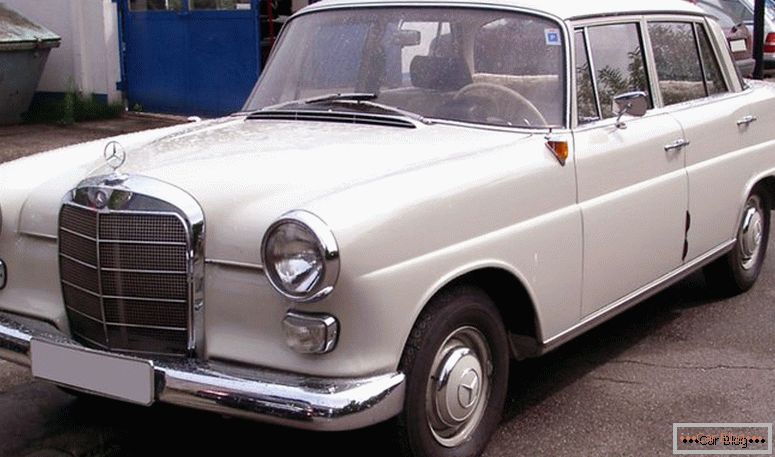
In 1961, the W110 came out, replacing the Pontoon. The main difference was considered a rigid cell cabin, crushed front and rear zones in the cabin. Under the hood was a 6-cylinder engine, 4-speed automatic, disc brakes and 2-circuit brake system. There were also diesel versions, of which there were more than petrol ones. A total of 628,000 of these models were released in 7 years.
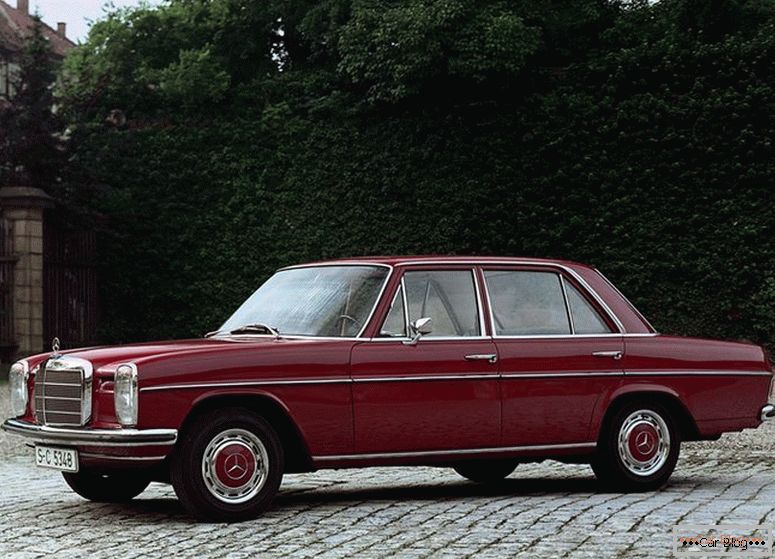
Next came the 1968 W114 / 115 cars, 114 are the 6-cylinder versions, and 115 are the 4-cylinder ones. Here, oblique levers on the rear suspension are used, there is a stabilizer bar, a foot brake, a steering column switch with several functions. Under the hood is a 5-cylinder, 3-liter naturally-aspirated engine with a capacity of 80 liters. with. This generation was produced for 8 years and a little less than 2 million copies were built.
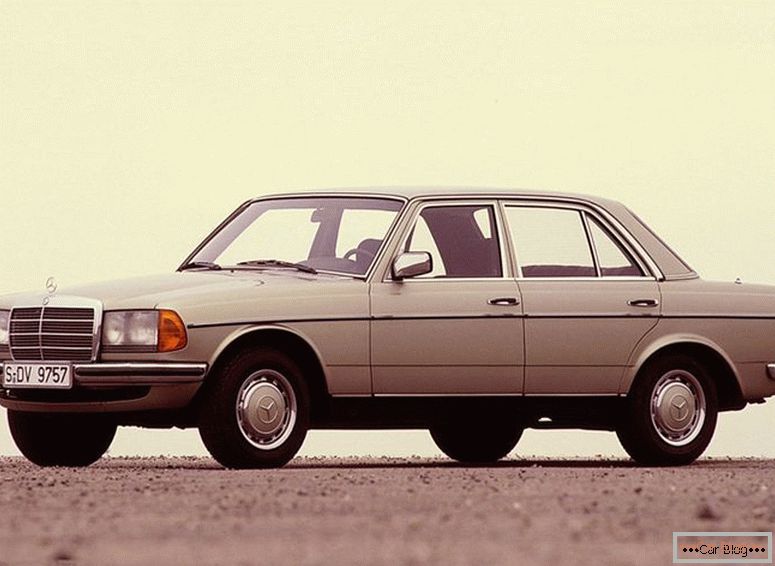
Further, between 1975 and 1986, the W123 series was produced, in which it became much more convenient for passengers. The front subframe was removed, and the steering wheel ceased to be traumatic. The fuel tank was installed behind the rear axle. Among the options appeared ABS and airbag for the driver. There is also a wagon version. The engines were installed and gasoline, and the new turbodiesel with a capacity of 125 liters. with. The W123 series of cars was produced 2,697,000 copies.
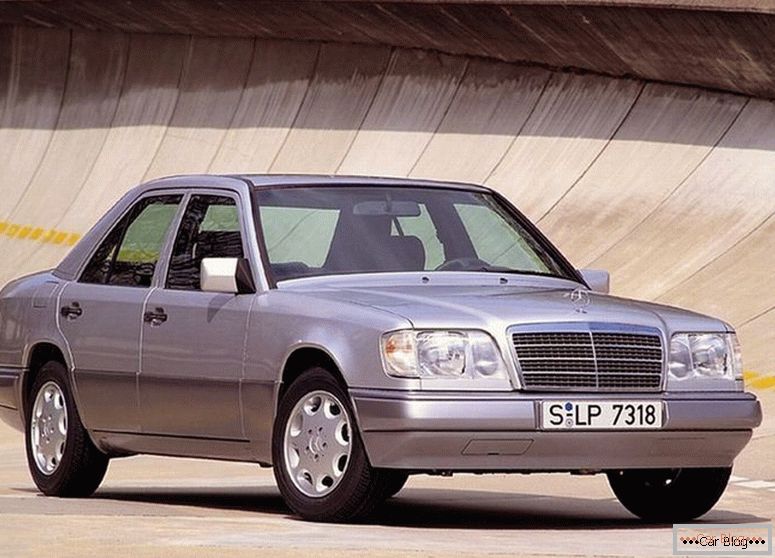
Then came the official E-class - the W124 series, which was successfully produced from 1984 to 1996. Rear suspension - multi-link, front - rack McPherson. In this series there are wagons, cabriolets, coupes. A little later appeared and all-wheel drive version, and more powerful engines - V8, the power of which ranged from 272 to 381 liters. with. There is also the most charged complete set 500E, Porsche was engaged in its development, and then came out even more smart E60 AMG. The 124th body was produced for 11 years, during which time 2,562,000 cars were created.
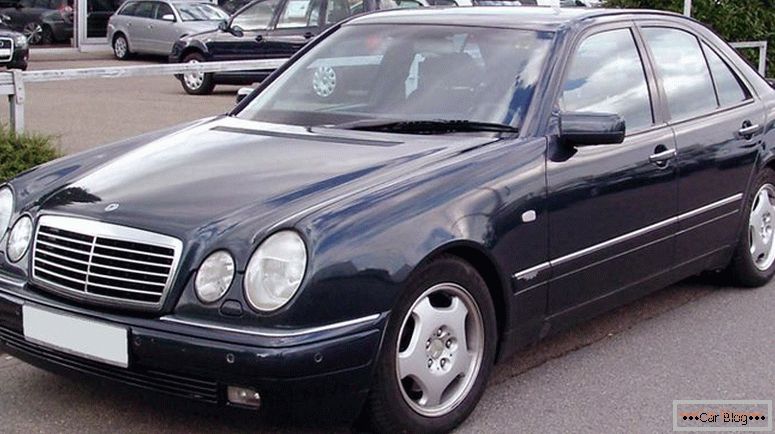
In 1995, there was a "bespectacled" from Mercedes - W210. The suspension uses 2 levers, an ESP system and an automatic 5-speed gearbox. After 1997, inline 6-cylinder engines changed to V-shaped. In 1998, the common rail system was used in turbo diesel engines. But the popularity of this body has decreased slightly. Over 8 years, 1,650,000 cars were built.
Recommended article: Skoda Rapid 2013 (price 13,000 euros) is beautiful and compact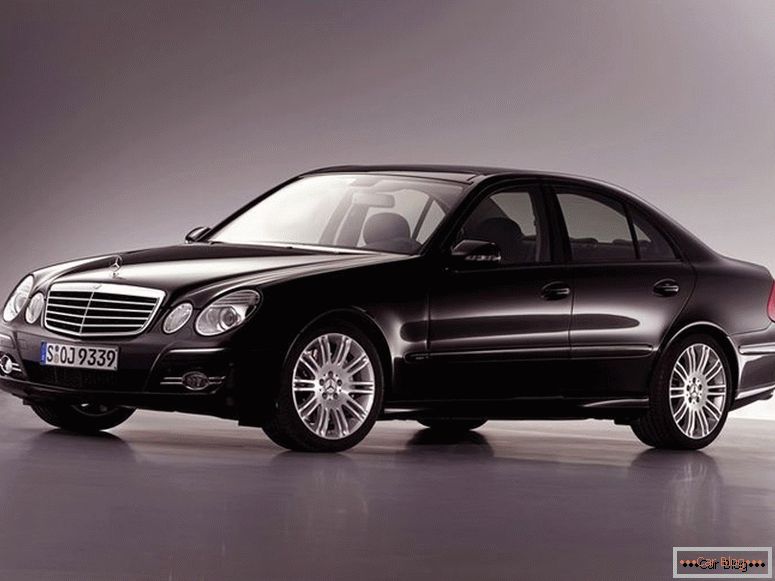
In 2002, a new generation appeared - W211. A 7-speed automatic has already appeared here, aluminum panels, a 4-cylinder turbodiesel with balance shafts, a Twinpulse supercharged gasoline engine, air suspension, Sensotronic braking system, bi-xenon headlights, frontal airbags appeared on the body. Until 2010, produced 1,750,000 cars.
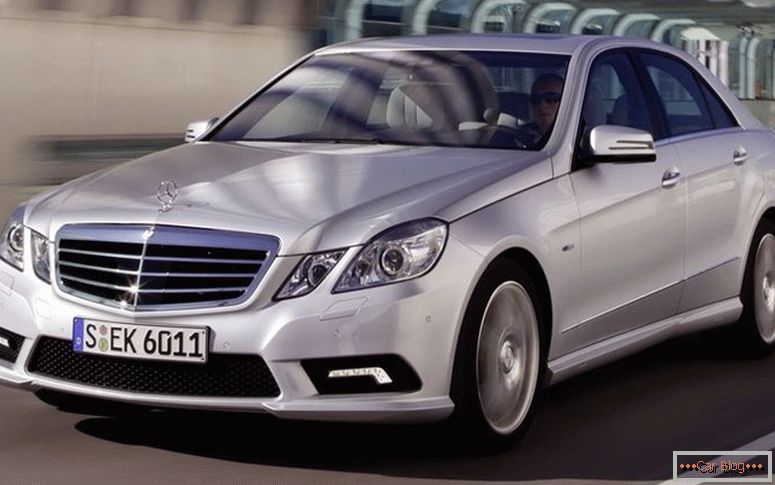
Then came the body W212 in 2009. Front - McPherson, many modern features, assistants for the driver. After 2013, there was a restyling, after which the front of the car changed significantly, over time a 9-speed automatic appeared.
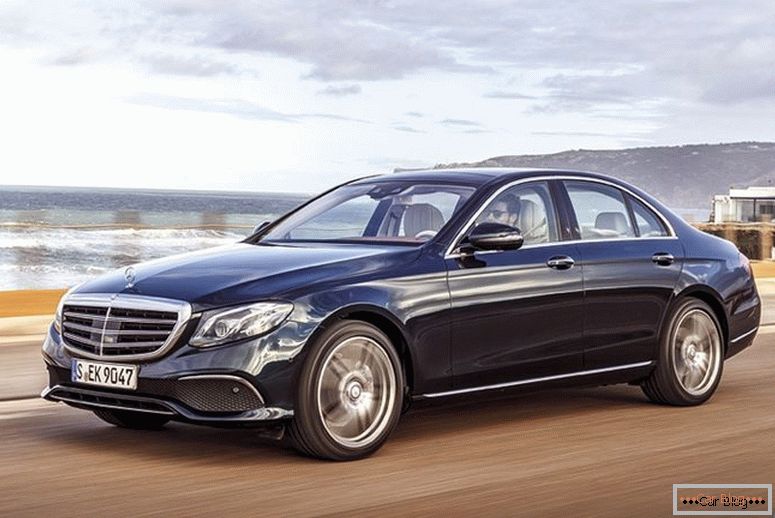
But now on sale is the newest generation - W213. A coupe and wagons still remained in the body 212, but soon they will be improved.
New Mercedes E-class W 213
When the new W213 was presented, it immediately immediately reminded the GLC crossover with something, technically, these cars are also very similar. In the sedan, even the bellows on the suspension are multi-chamber, as well as on the GLC. And all because the development of these two models is led by the same person - Michael Kielz.
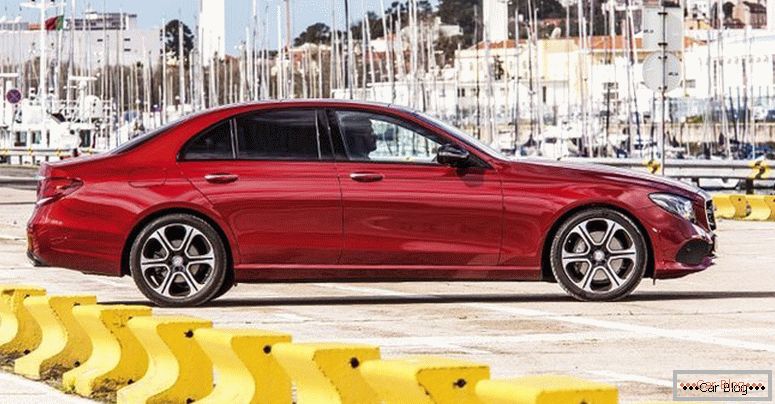
The new E-Class Mercedes uses the modular platform MRA, the front has a 2-link suspension, and the back has a 5-link suspension. The same platform is used in the C-class. And in the GLC crossover, original lower levers and a stabilizer bar are installed on the front suspension.
So the character of the new E 300 is very similar to the character of the GLC. Under the hood, at the E 300 is a turbocharged 2-liter gasoline engine with a capacity of 245 liters. with. It is slightly noisy, even with double glazing, you can hear his work. In tandem with this motor works automatic transmission 9G-Tronic, which behaves exactly the same as in the GLC 250.

True, there is a difference in the softness of the course, especially during the “comfort” mode in the air suspension. When the sedan goes over bumps, the blows are felt, as well as roll in corners are also noticeable. The pneumatic suspension clearly turned out to be tough, despite the fact that the steering wheel is spinning in a special way - it is clamped in the near-zero zone, but this is done to make it easier to drive at high speed along a straight line.
But for those who do not like such a stiffer suspension, it makes sense to drive an E400 Mercedes with all-wheel drive, which has regular springs.
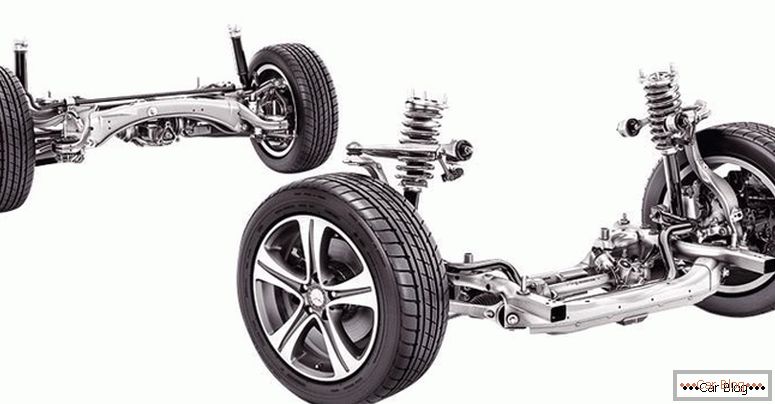
There is also a diesel equipment of a Mercedes E 220 d, under the hood of which a 4-cylinder diesel engine OM 654 with a capacity of 194 liters is installed. with. It works very quietly, while driving it is almost inaudible, great traction. Automatic transmission, it is clear that it is set up well, since this version will be bought particularly well in Europe, and it is planned that this equipment will bring the greatest profit for the company.
At 220 d, the spirit of Mercedes is felt, but the suspension settings are really unusual, there is a big difference between Sport and Comfort, for the Russian market, where there are bad roads, an intermediate mode is also needed.
There is also a more powerful equipment - 350 d with a V6 engine, but it will not be sold in Russia yet, but its suspension is slightly different, the comfort mode is lower than valko, and the car behaves softer while driving along the pavement.

Basic configuration - Mercedes E 200, with a gasoline 4-cylinder 184-horsepower engine. As for the Mercedes E 400 with all-wheel drive and a 3-liter 333-horsepower engine, it is good. The last generation E 400 after restyling seemed to be insufficiently tuned, the engine is powerful, and the gearbox did not work so clearly with this engine, but over time all the problems were fixed.
But in the new generation E 400 such problems are not noticed at all from the very beginning. The motor works perfectly, even at low revs its deep roar is heard. It feels an excess of power, which adds confidence, the driver knows that in any incomprehensible situation it is enough to slightly drown the gas pedal, after which the car will rush in a given direction.
Recommended article: New Toyota RAV 4 2013 (Toyota RAV 4) is a smart and economical car.Suspension here Dynamic Body Control with low springs and shock absorbers controlled by electronics. Such a suspension on a good road would be more comfortable, but for Russian roads, the usual springs would be better. The smoothness of the E 400 at height, and the roll angle is small. There was a feeling of the car, the steering wheel became more informative, the reactions to the driver's actions are very accurate.
In comfort mode, the steering wheel is clamped in the near-zero zone, so that it is more convenient to drive on autobahns, and in sports mode, the effort on the steering wheel is reduced, it is unusual at first, but there is something in it. In the Sport mode, the E400 behaves much better than in the comfort mode. Therefore, immediately after turning on the ignition, it is advisable to switch the car to sport mode.
As an option, you can order the package Drive Pilot, which will simplify driving, but this is not a full-fledged self-driving car.

Drive Pilot keeps the distance to the car that drives in front, keeps the car in the lane even on an arc, it can get under way on the track if 30 seconds have not passed after the car stopped. The system scans traffic signs, after which the car can brake itself. True, this system has one drawback - it is necessary that the driver keeps his hands on the steering wheel, and if he removes them, the system will decide that the driver has either fallen asleep or just turned off, after which he will begin braking until he stops.
In Infiniti, for example, there is an Active Lane Control system, which does not require the driver to keep his hands on the wheel. So there is no special point in Drive Pilot, because the driver will not be able to relax. But the car can change from one lane to another without a driver; simply turn on the turn signal.
The system can work up to 210 km / h, but looking at it is an exhausting task, so it's easier to simply turn on active cruise control. The system has become better to drive a car, if it travels in one lane, even if the lines are slightly erased, but if non-standard situations arise such as points of payment for the road, the car can crash into such a point.
And the Drive Pilot system is quite expensive, so instead of it, it is better to simply order a smart cruise control. The parking system here is very sensitive, if there are people in 3 meters from the trunk, the car itself will suddenly slow down.
In the car there is no night vision system and infrared camera. But there are active LED headlights and automatic high beam, which turns off in time so as not to dazzle oncoming cars, and passing lights too.
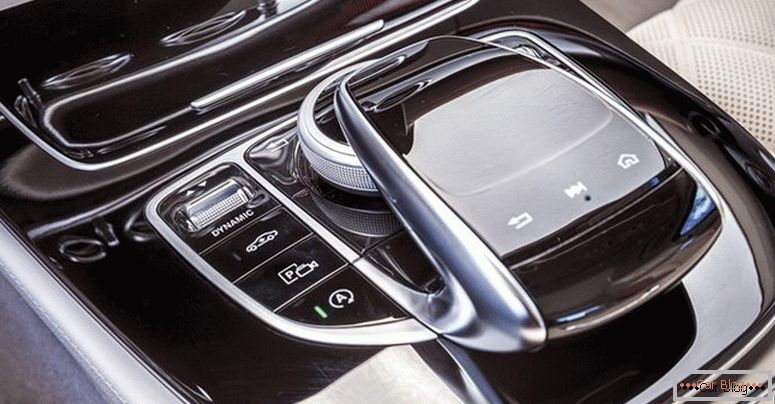
There are a lot of smart electronics in the car, there is even an application for a smartphone with which you can park the car while outside the car. You can also open the machine using the NFC module on your smartphone. And this is all very difficult, so the price for a new generation of the E-class is quite high. In Russia, the price of the basic version of the E 200 with a gasoline engine starts at 2,900,000 rubles, which is more than similar configurations of the BMW 5-Series and Audi A6. E 220 d with a diesel engine will cost 3,000,000 rubles. More powerful configuration E 300 and E 400 with all-wheel drive will be available in September 2016 in Russia. All-wheel drive version of the E 200 will appear in December.
The level of technology is now very high, so each equipment on the sensations can be very different. For example, with a suspension of the same type, but with different motors, E-class cars can travel differently, and if the car has an Agility Control passive suspension with a package for bad roads and run-flat tires, then the sensations can be even more different.
Recommended article: Bugatti Veyron - the legendary dream-carOM 654 diesel engine
Motor OM 654 with steel pistons, which have a large margin of safety, and also they have less friction. These pistons are more compact: the skirt and fire belt are shorter than those of aluminum pistons. Also, the pistons become lighter when compared with aluminum pistons, and steel conducts less heat, which means that the gaps between the pistons and the walls of the cylinders are more stable. But there is also a minus in steel pistons - the bottom of the motor can overheat faster, therefore there should be a good cooling of the oil.
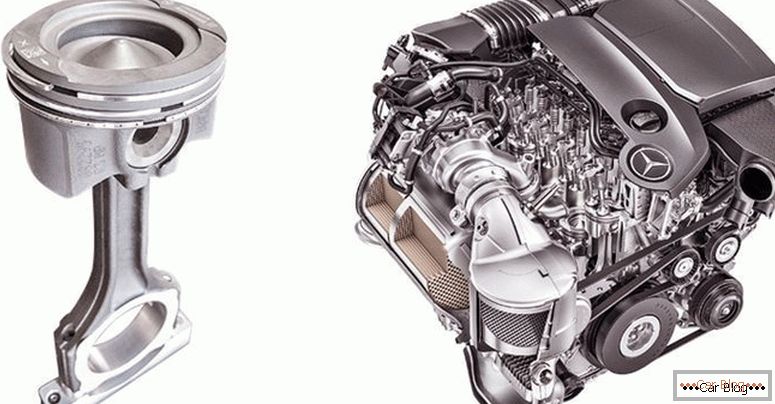
If you look at the piston in the section, you can see that it is omega-shaped with a step along the edge of the combustion chamber. This allows the fuel mixture to whirl and the combustion process proceeds better. The motor is shrouded in noise insulation box, very much like the motors of the 7th BMW series. Diesel engines conforming to the Euro-6 standard will arrive in Russia, they will be guaranteed for 160,000 km. In diesel engines every 20,000 km. you need to add a special fluid and change the diesel particulate filter when the time comes for replacement, the on-board computer will warn you about this. If you ignore this warning, the engine simply will not start.
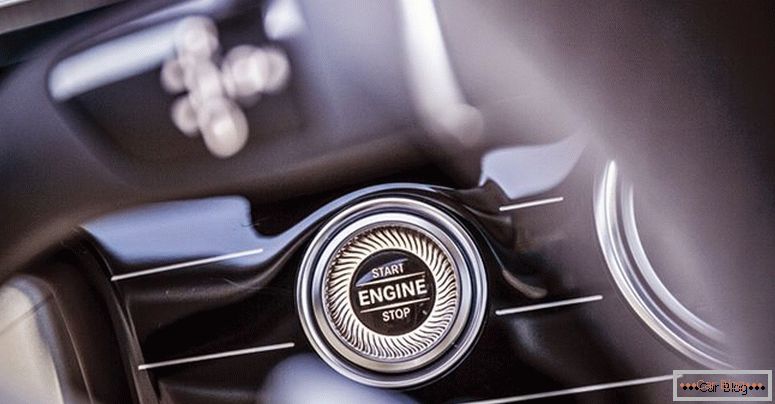
In general, steel pistons with the new Nanoslide technology (plasma spraying of iron on cylinder walls) reduced friction by almost 50%, and as a result, fuel consumption has decreased. For example, the previous generation E 250 CDI spent on the combined cycle 5.7 liters of diesel, the new E 220 d consumes only 3.9 liters per 100 km.
These motors are reliable because this technology is used by the E 350 BlueTEC model and has shown itself to be the best. The developers claim that such a motor will be able to safely work at least 400,000 km. run
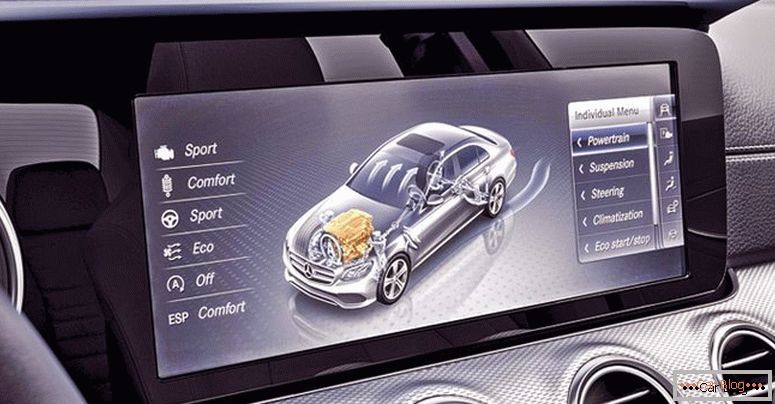
Salon
In cheaper trim levels, including the base version, a multimedia system display with a diagonal of 8.4 inches will be installed. Also used the classic instrument panel, which has a volumetric scale. In the more expensive models - 2 display, that there is some jumble.

In general, the interior design is the same as in the last S-class, but the build quality is slightly worse, the joint of the door trim and the front panel is quite large, perhaps this will be fixed in future cars.
It is convenient to make the screen settings, it is also convenient to scroll through the menu using the control buttons on the steering wheel. The instrument panel can be made to your liking in 3 versions, but the scales in all cases will remain flat.
Comand Online system is updated, so it looks just fine, the processor runs even faster than on the S-class. There is a huge amount of settings, like a sports car.
The engine starts with a button that has a rather beautiful pattern. The design of the keys and their location is about the same as in the S-class.
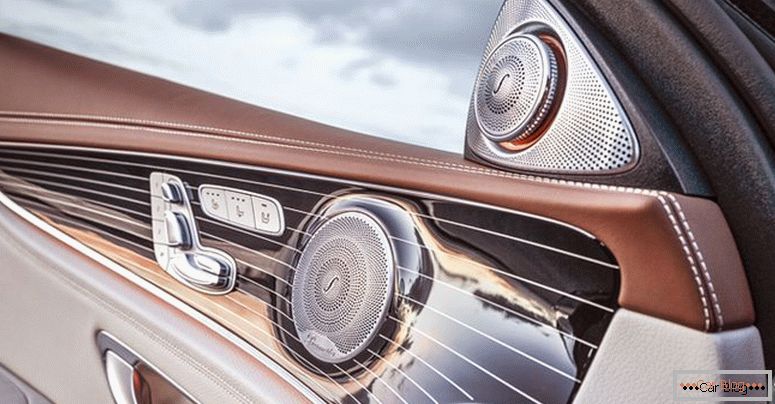
The doors on the inside also look very beautiful, the Burmester audio system sounds good, but there are systems with even better sound, for example, like in a Porsche. There is enough space in the rear seats, although the opening angle of the doors is quite modest. AT Mercedes E-class there are chairs of own production, with a lot of settings, massage and active lateral support. Even on the armrests there is heating. The amount of luggage remained the same as on its predecessor - 540 liters.

The body has become stronger and lighter due to the use of high-strength articles, now there is more aluminum. The “glasses” of the front pillars are made of aluminum, in places where the front suspension arms are attached - the torsional stiffness indicator is even better - 100,000 Nm / deg. And this is a very high figure.
And then test drive a new Mercedes E-class:

